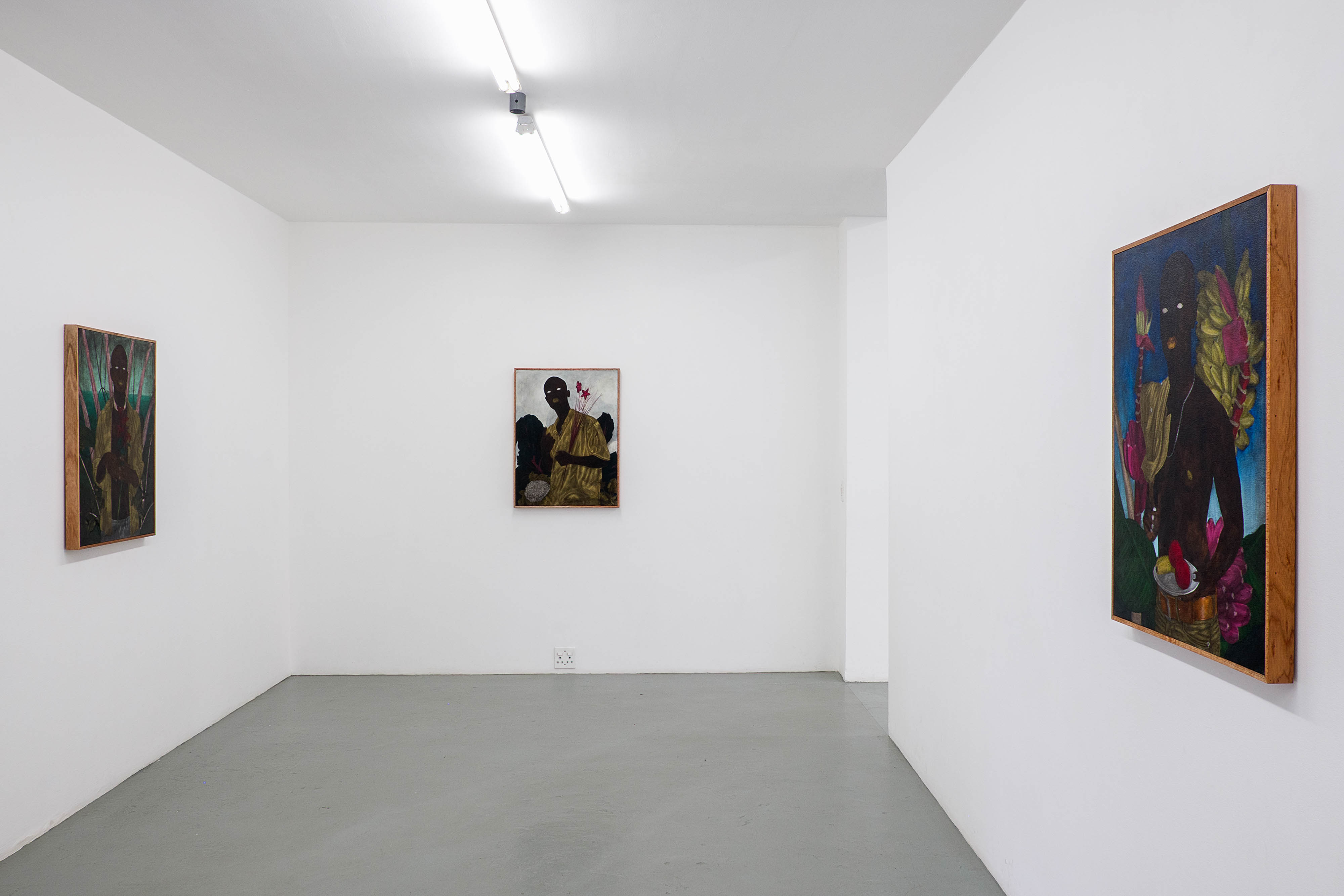







Comprising a series of self-portraits, Safari Fantasy marks a recent development in Samson’s practice that in earlier work has centred on the depiction of fictional white male figures and Vanitas-like still lives. In these new paintings, we find the artist himself, casually dressed, in slightly fantastical or dreamlike natural settings, each time differently posed but always according to the same traditional composition. In many of the works, the artist’s face remains incomplete. Recalling the smooth marble of classical sculpture, empty white eyes stare out at the viewer – as if they were in fact looking inward – suggesting the preeminence of the interior life of the artist-subject over the external world. The backgrounds are partly real and partly imagined, composites of his own fantasies and the scenic landscapes of Cape Town and rural Eastern Cape, where this body of work was produced. They represent dreamworlds, according to Samson, but are not intended as utopias, and the threat of darkness looms persistently. Adding to the surreal quality of the self-portraits is the way in which his own figure isn’t integrated with the worlds behind him but rather superimposed onto them like artificial backdrops; this dislocation between subject and background lends the paintings an historical feeling reminiscent of Northern Renaissance portraiture. Samson states:
For Samson, this body of work is pivotal. While previously he has engaged with themes of masculinity and race, and the frustrations of young black Africans and their sense of displacement within the nationalistic narrative of social cohesion, his intention with these paintings is to move away from the socio-political context of their making and instead shift his gaze inward.
“When I create an artwork, I want the results to feel secret, almost holy and distant. I always picture the audience of my work standing in front of it, looking what I have put in front of them, whether it’s the image of flowers or figures…, unclear as to what it’s all about and also having a sense that what’s in the images is something from a different world that they don’t belong to, maybe from another time or perhaps somewhere where no one goes.”
For Samson, this body of work is pivotal. While previously he has engaged with themes of masculinity and race, and the frustrations of young black Africans and their sense of displacement within the nationalistic narrative of social cohesion, his intention with these paintings is to move away from the socio-political context of their making and instead shift his gaze inward.